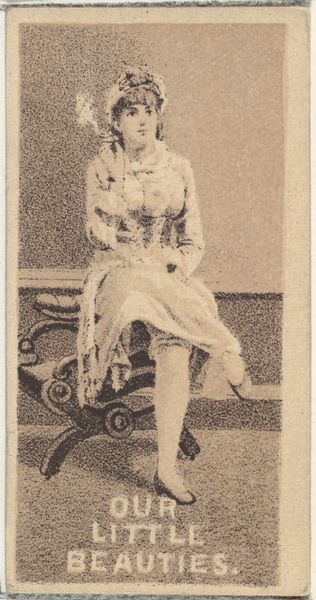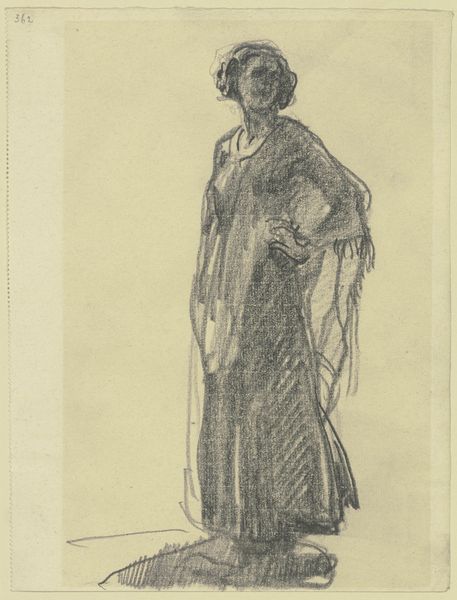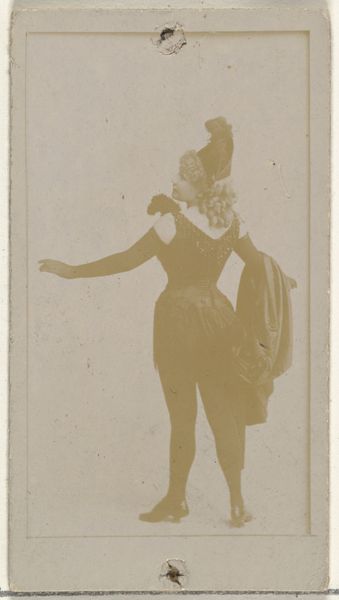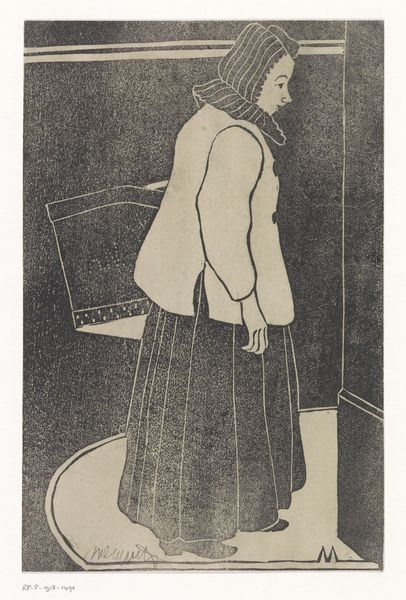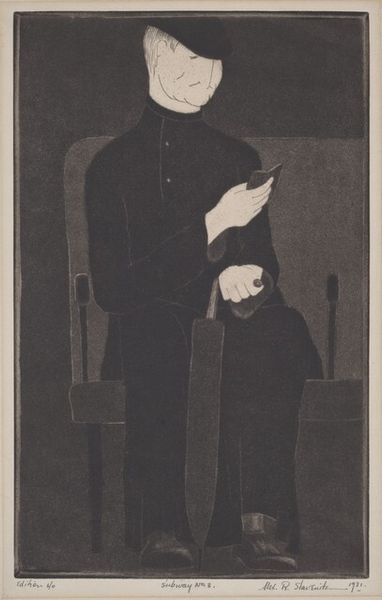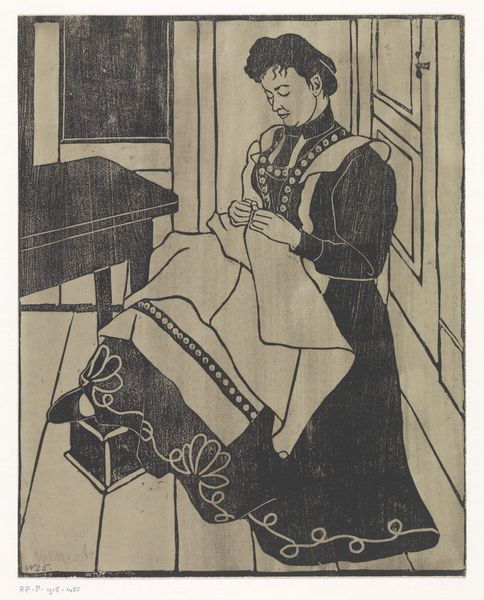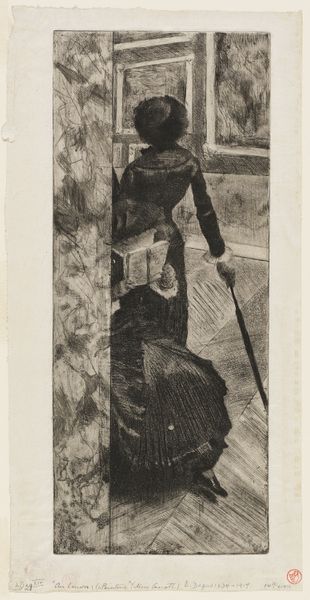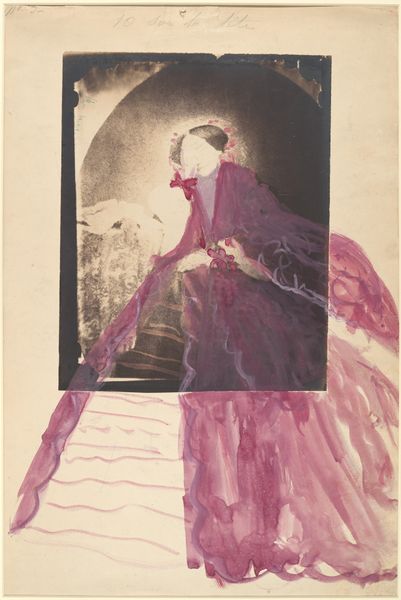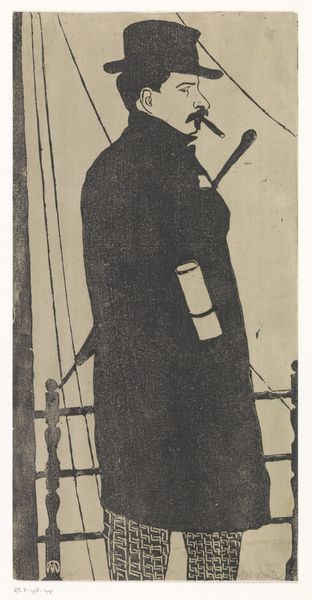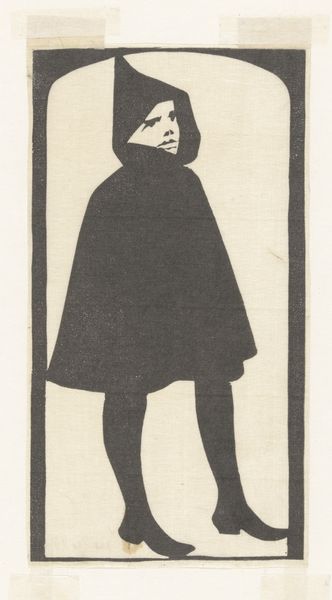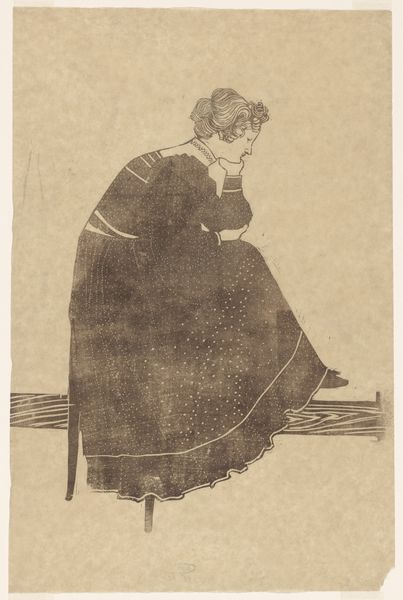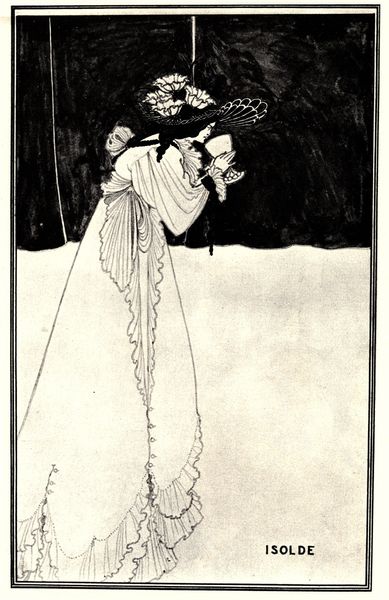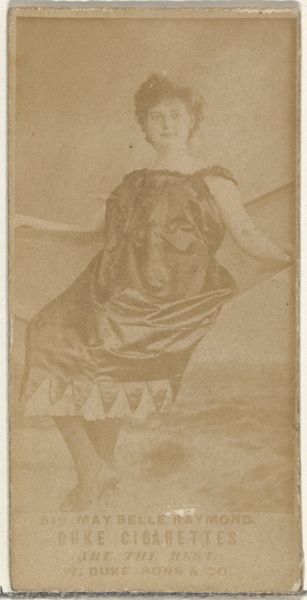
Zittende vrouw met hoed en in zwarte jurk, de handen op de knieën c. 1899
0:00
0:00
print, etching
#
portrait
# print
#
etching
#
figuration
#
symbolism
Dimensions: height 231 mm, width 178 mm
Copyright: Rijks Museum: Open Domain
Curator: This etching from around 1899, “Zittende vrouw met hoed en in zwarte jurk, de handen op de knieën” by Samuel Jessurun de Mesquita, really catches the eye, doesn't it? Editor: It does. I'm struck by the simplicity, but also the weight of the dark ink. What do you see in the way this print was made? Curator: Let’s think about the materials and process first. De Mesquita’s choice of etching as a reproducible medium is significant. Etchings allowed for relatively easy multiplication, moving art beyond a unique, precious object. The emphasis here shifts to production itself. How many impressions of this image exist, circulating in society? Editor: So, instead of focusing on, say, the emotional expression, we consider how the creation and distribution impact its meaning? Curator: Precisely. Consider also the use of strong contrasts and flat planes. It feels almost like a woodcut in its boldness, challenging traditional artistic hierarchies by embracing techniques associated with printmaking. Is the “craft” of this etching deemed of lesser importance than painting at the time of production? What societal structures decide such assessments? Editor: It definitely makes you think about the artist's choices. What was it about this *process* that he found appealing? Curator: I would speculate, it perhaps offered him greater accessibility and perhaps a modern aesthetic that aligned with social shifts. Printmaking democratized art, enabling broader consumption and shaping new avenues for artists' livelihood. It makes us consider, how does access shape our interpretation? Editor: So, examining the "how" and "why" it was made opens up a completely different conversation than just appreciating the image itself. Thanks! Curator: Absolutely! Considering materials and production offers a critical lens to question art’s social role and our own consumption patterns.
Comments
No comments
Be the first to comment and join the conversation on the ultimate creative platform.

